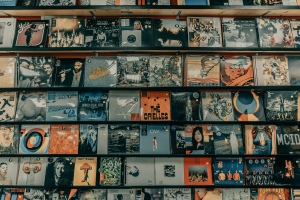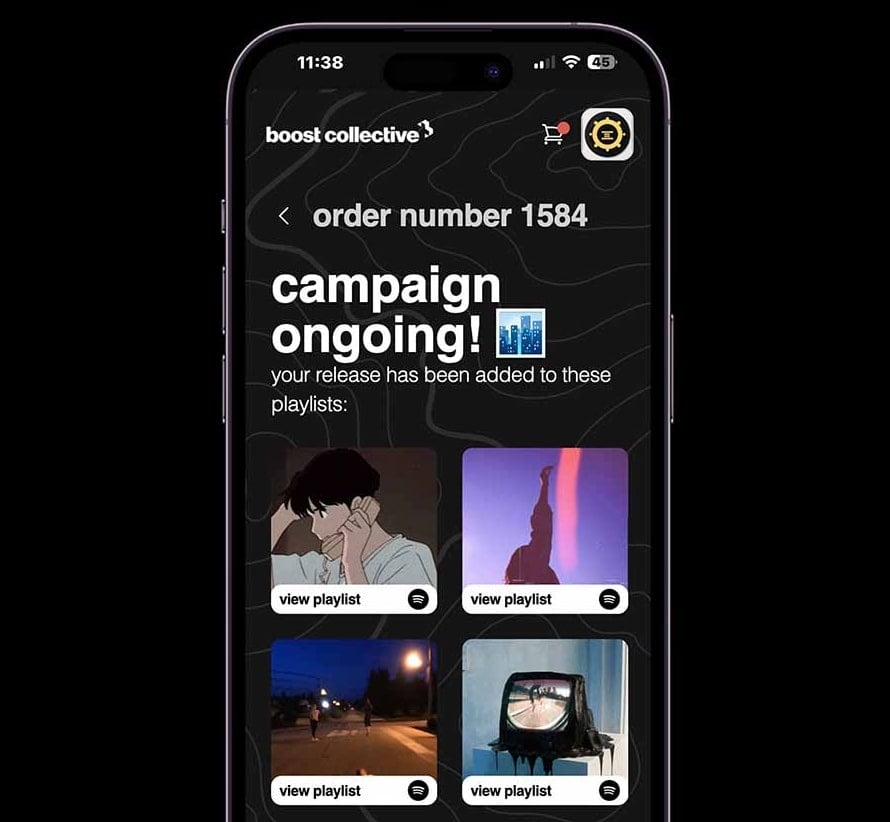Overview

Are you an aspiring musician looking for ways to get your music out to the world?
In today's digital age, streaming sites have become an essential tool for promoting music, and distributing music.
However, simply using unlimited music, uploading your tracks and hoping for the best won't cut it.
To effectively promote your music on streaming sites, you need to have a strategic approach and understanding of the streaming platform's workings.
Introduction
The music industry has experienced a massive shift with the rise of the streaming service platforms.
Musicians no longer solely rely on record labels to get their music heard by audiences worldwide.
Streaming to promote music through streaming sites that have democratized the industry, allowing independent artists to have a level playing field.
However, with millions of songs available, standing out from the crowd can be challenging.
To maximize the visibility and reach of your own music catalog on streaming sites, you need to employ specific strategies and techniques.
From optimizing your profiles to leveraging your own playlists, and engaging with your audience, there are various steps you can take to ensure your music gains traction and attracts new listeners.
In this feature, we will discuss the top strategies to promote your music effectively through streaming sites and increase your music distributor's chances of success in the digital music landscape.
The Rise Of Streaming Platforms And Their Impact On The Music Industry

Streaming platforms have already significantly impacted the music industry.
Here are some key points about the rise of streaming platforms and their impact on the music industry:
-
The transition from Physical Sales to Digital Streaming: With the rise of streaming platforms, the music industry saw a significant shift away from traditional physical sales (CDs, vinyl) and digital downloads (iTunes) to on-demand music streaming. Consumers have embraced the convenience of accessing vast music libraries on their devices with just a few clicks.
-
Revenue Generation: Streaming platforms have become a major source of revenue for the music industry. While the revenue from physical sales and downloads had been declining for years, streaming services helped reverse this trend. Platforms like Spotify, Apple Music, Amazon Music, and others pay artists and rights holders based on the number of streams their songs receive.
-
Artist Discoverability: Streaming platforms have enabled independent and lesser-known artists to reach a global audience. Algorithms and personalized playlists have played a significant role in exposing listeners to new music based on their preferences, rather than relying solely on radio play or marketing efforts by major labels.
-
Challenges for Artists' Income: Despite the rise of streaming, there have been debates about whether artists receive fair compensation for their work. Some artists have raised concerns that the royalties paid per stream are relatively low, especially for smaller artists with less bargaining power.
-
Impact on Record Labels: Streaming platforms have changed the dynamics between artists and record labels. Independent artists can now release music without the need for traditional label deals, retaining more control over their work and earnings. However, major record labels still have significant influence and control over the most prominent artists.
-
Shift in Music Consumption Habits: Streaming has led to changes in how people consume music. The focus has shifted from owning music to accessing it through subscriptions. As a result, listeners' habits have evolved, with curated playlists and algorithmic recommendations becoming the primary way people discover new music.
-
Global Reach: Streaming platforms have broken down geographical barriers, enabling artists from around the world to connect with international audiences without the need for physical distribution.
-
Influence on Music Creation: Some argue that the streaming model has influenced the creation of music. Shorter songs and albums have become more prevalent, potentially driven by the desire to increase the number of streams. Additionally, artists may cater their music to popular playlists to gain exposure.
-
Data and Insights: Streaming platforms offer artists and labels valuable data and insights into listener behavior, which can help them make more informed decisions regarding marketing, touring, and content creation.
Overall, the rise of streaming platforms has revolutionized the music industry, offering both opportunities and challenges for artists, record labels, and consumers alike.
As technology continues to evolve, it will be interesting to see how music streaming services and platforms further shape the music landscape in the future.
The Importance Of Promoting Your Music On Streaming Sites
Promoting your music on multiple platforms and streaming sites is of paramount importance in today's digital music landscape.
Streaming platforms have revolutionized how people consume and download music together, making them a dominant force in the music industry.
Here are some key reasons why promoting your music on streaming sites is essential:
-
Wide Audience Reach: Streaming sites have millions of active users from all around the world.
By making your music available on these platforms, you can potentially reach a vast audience that would be difficult to reach through traditional distribution methods alone. -
Discoverability: Streaming platforms offer advanced algorithms and recommendation systems that help users discover new music based on their listening preferences.
When you promote your music on these platforms, your songs become more likely to be recommended to users who might enjoy your genre or style, increasing your chances of getting discovered. -
Equal Opportunities: Unlike traditional music distribution, where major label artists often get preferential treatment, streaming platforms provide a more level playing field.
Independent and lesser-known artists have the same opportunities to showcase their music, compete for listeners' attention, and gain popularity. -
Data Insights: Streaming sites provide valuable data and analytics on how your music is performing.
You can access information about the number of streams, listener demographics, and geographic locations, which can help you make informed decisions about your marketing and touring strategies. -
Revenue Generation: While streaming royalties might not be as substantial as traditional sales, they still contribute to your overall revenue.
As your fan base grows and streams increase, so will your earnings from these platforms.
Moreover, some streaming sites offer additional monetization opportunities, such as playlist placements and exclusive releases. -
Social Sharing and Networking: Streaming platforms often integrate with social media, allowing listeners to share their favorite songs and playlists.
This social aspect can lead to organic growth and further exposure as listeners share your music with their friends and followers. -
Building a Fan Base: Consistent promotion on streaming sites can help you build a loyal fan base.
Engaging with your listeners, responding to comments, and regularly releasing new music can help you establish a strong connection with your audience, turning casual listeners into devoted fans. -
Record Label and Industry Attention: Impressive streaming numbers can attract the attention of record labels, music industry professionals, and booking agents.
If you can demonstrate a strong streaming presence and a dedicated fan base, it can enhance your chances of securing deals and collaborations.
Understanding Your Audience And Platform Selection

Researching Different Streaming Platforms And Their User Demographics
There are several popular music streaming platforms with distinct user demographics. Here's an overview of some major platforms and their typical user demographics:
-
Spotify:
-
Demographics: Spotify has a broad user base and appeals to a wide range of age groups. However, it is particularly popular among younger listeners, with a significant number of users between the ages of 18 and 34.
-
Geographical Reach: Spotify is available in many countries around the world, making it a global platform.
-
-
Apple Music:
-
Demographics: Apple Music caters to a slightly older audience compared to some other platforms, with a substantial number of users in the 25 to 44 age range.
-
Geographical Reach: Apple Music is available in numerous countries and has a significant presence in regions where Apple products are popular.
-
-
Amazon Music:
-
Demographics: Amazon Music's user base is similar to that of Amazon's overall customer demographic. It appeals to a broad audience, including older and younger listeners.
-
Geographical Reach: Like Spotify and Apple Music, Amazon Music is available in multiple countries, with a strong presence in regions where Amazon services are widely used.
-
-
YouTube Music:
-
Demographics: YouTube Music attracts a diverse user base due to its association with the YouTube platform. Users of all ages can be found on this platform, but it tends to have a strong following among younger audiences.
-
Geographical Reach: YouTube Music is available globally and has a vast library of user-generated content in addition to official music videos.
-
-
Tidal:
-
Demographics: Tidal differentiates itself by offering high-fidelity audio and exclusive content. As a result, it tends to attract audiophiles and music enthusiasts, as well as fans of specific artists with exclusive releases on the platform.
-
Geographical Reach: While available in several countries, Tidal's user base is somewhat smaller compared to giants like Spotify and Apple Music.
-
-
Deezer:
-
Demographics: Deezer has a diverse user base, attracting listeners across various age groups. Its popularity varies by region, with strongholds in parts of Europe and Latin America.
-
Geographical Reach: Deezer is available in many countries, with a particularly strong presence in Europe.
-
-
SoundCloud:
-
Demographics: SoundCloud is known for being a platform where independent artists and producers can upload and share their music. It has a significant following among young and aspiring musicians.
-
Geographical Reach: SoundCloud is available globally and has a large and diverse community of creators and listeners.
-
Choosing The Most Suitable Platforms For Your Music Genre And Target Audience
Selecting the most suitable platforms for your music genre and target audience is essential for maximizing your reach and engagement with potential fans.
Each platform distribution service has its own unique features and user demographics, so it's crucial to understand your genre and audience to make informed decisions.
Here are some general guidelines to help you choose the right platforms:
-
Know Your Genre: Understand the characteristics of your music genre and identify the platforms where similar artists are successful. For example, if you're in the electronic dance music (EDM) genre, platforms like SoundCloud and Beatport might be more appropriate, whereas if you're a singer-songwriter, YouTube and Spotify could be more relevant.
-
Identify Your Target Audience: Determine the age group, interests, and online habits of your target audience. Different platforms attract different demographics. For instance, younger audiences often prefer TikTok and Instagram, while older listeners might be more active on Facebook and Pandora.
-
Streaming Services: Streaming platforms like Spotify, Apple Music, and Amazon Music are crucial for almost any music genre. These services allow you to reach a wide audience and provide excellent discoverability features. Focus on these platforms to make your music easily accessible to listeners.
-
Social Media Platforms: Social media is a powerful tool for engaging with your audience and promoting your music. Consider platforms like Instagram, Twitter, Facebook, and TikTok. Each platform has its own strengths, so tailor your content to suit each one.
-
YouTube: YouTube is an essential platform for music promotion due to its massive user base. Create music videos, lyric videos, and behind-the-scenes content to share your music and connect with fans.
-
SoundCloud: If you're an independent or emerging artist, SoundCloud is an excellent platform to showcase your music. It has a community of music enthusiasts and can be a starting point for gaining traction.
-
Bandcamp: Bandcamp is an artist-friendly platform that allows you to sell music, and merchandise, and connect directly with fans. It's particularly popular among indie artists and bands.
-
Live Streaming Platforms: Consider platforms like Twitch and Instagram Live for hosting live performances, Q&A sessions, and behind-the-scenes content.
-
Niche Platforms: Explore niche platforms that cater specifically to your genre. For example, if you're in the electronic or DJ scene, Beatport and Mixcloud could be beneficial.
-
Music Blogs and Playlists: Connect with influential music blogs and playlist curators. Getting featured on popular blogs and playlists can significantly boost your visibility.
-
Collaborate with Influencers: Partner with influencers or content creators who align with your music style and target audience. Their endorsement can introduce your music to a wider group of listeners.
-
Email Newsletters: Build and maintain an email list to keep your fans informed about your latest releases, events, and updates.
Creating High-Quality Music and Artwork

The Significance Of Producing Well-crafted And Professional Music
Producing well-crafted and professional music is of utmost importance for several reasons.
Whether you are a musician, producer, or part of the music industry, the significance of high-quality music cannot be overstated.
Here are some key reasons why it matters:
-
Artistic Expression: Music is a form of art and self-expression. Creating well-crafted music allows artists to convey their emotions, thoughts, and experiences effectively. A polished and professional production can elevate the impact of the message and connect with the audience on a deeper level.
-
Audience Engagement: High-quality music tends to captivate and engage listeners more effectively. Professional production techniques, including mixing, mastering, and instrumentation, enhance the overall listening experience, making it more enjoyable and memorable.
-
Brand Image: For musicians and bands, the quality of their music reflects their brand image. Well-crafted and professional music demonstrates a commitment to excellence and attention to detail. It can help build a strong reputation and distinguish an artist from the competition.
-
Industry Recognition: In the competitive music industry, producing high-quality music is often a prerequisite for gaining recognition and respect. Labels, promoters, and industry professionals are more likely to take an artist seriously if their work showcases professionalism and talent.
-
Increased Reach: Exceptional music has a higher chance of gaining wider acceptance and reaching a broader audience. It may be picked up by radio stations, playlists, and online platforms, leading to increased exposure and more significant opportunities for the artist.
-
Emotional Impact: Music has the power to evoke strong emotions in listeners. Well-crafted and professional music can touch the hearts of people, create powerful connections, and leave a lasting impression.
-
Longevity: Timeless music that is well-produced has a higher chance of standing the test of time. It can continue to resonate with audiences for years or even decades, becoming part of the musical legacy.
-
Professional Growth: For aspiring musicians, consistently producing high-quality music is essential for personal and professional growth. Each new creation is an opportunity to refine skills, experiment with new techniques, and develop a unique musical identity.
-
Financial Success: While it's not the sole determinant of success, producing professional music can play a significant role in generating revenue. Quality music tends to attract more fans, leading to increased ticket sales, merchandise purchases, and streaming royalties.
-
Positive Impact on the Industry: Elevating the overall quality of music in the industry benefits everyone involved, from artists and producers to listeners and music enthusiasts. It fosters a culture of artistic excellence and encourages innovation and creativity.
Tips For Recording, Mixing, And Mastering Your Music For Streaming Platforms
Recording, mixing, and mastering your music for streaming platforms can be a challenging task, but with the right tips and techniques, you can ensure that your music sounds professional and polished.
Here are some tips to help you achieve the best results:
1. Invest in quality equipment: The quality of your recordings largely depends on the equipment you use. Invest in a good microphone, audio interface, and studio monitors to capture and reproduce your music accurately.
2. Choose the right room: Find a room in your house or studio that has good acoustics and minimal background noise. Consider acoustic treatment options such as foam panels or bass traps to improve sound quality.
3. Use a metronome: Keeping a steady tempo is crucial when recording, especially for genres like electronic music or hip-hop. Use a metronome to ensure consistent timing and rhythm throughout your tracks.
4. Experiment with different microphone techniques: Different microphones capture sound differently, and experimenting with various microphone techniques can give you different tonal options. Try recording vocals or instruments from different distances or angles to find the sweet spot.
5. Mix with reference tracks: One way to achieve a well-balanced mix is to use reference tracks from artists or songs you admire. A/B compares your mix with professional tracks to gain insights and make necessary adjustments.
6. Use EQ and compression wisely: EQ (equalization) and compression are powerful tools when it comes to mixing. Use EQ to shape the frequency response of individual tracks, and compression to control dynamics and add punch to your mixes. However, use them sparingly and avoid over-processing, as it can lead to a loss of clarity and dynamics.
7. Pay attention to levels and panning: Mix rap music in a way that each instrument and sound has its space in the stereo field. Avoid cluttering the mix by properly panning instruments and controlling the volume levels. Use automation to create movement and dynamics within your mix.
8. Master for streaming platforms: Streaming platforms often have specific loudness normalization standards. Ensure that your final master meets these guidelines to avoid any unwanted loudness changes when your music is streamed. Use a limiter or mastering plugin to achieve a balanced and commercially competitive sound.
The Wrap-Up

Promoting your music online and through streaming sites offers incredible opportunities for aspiring artists.
By following these strategies and staying consistent in your efforts, you can effectively promote your music, grow your fanbase, and pave the way for a successful music career in the digital age.
Embrace the power of music streaming platforms and let your music be heard by the world.
